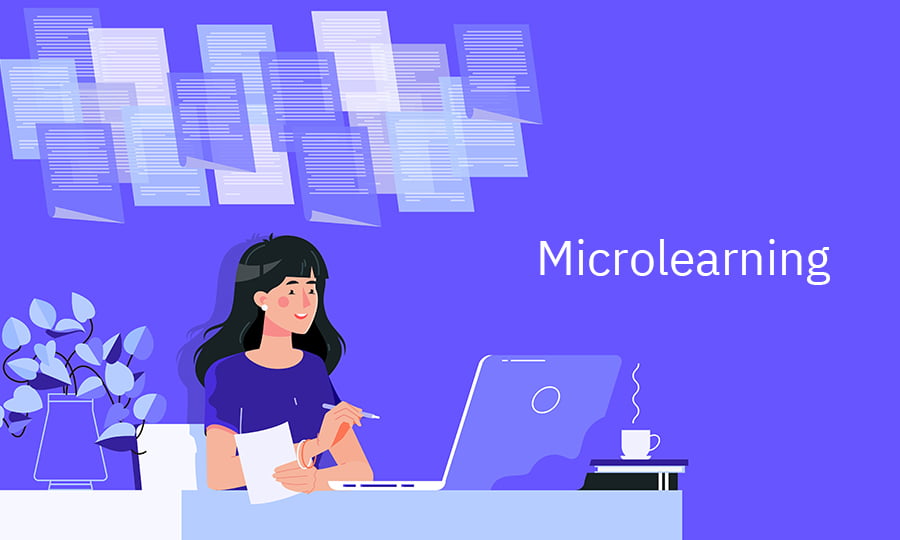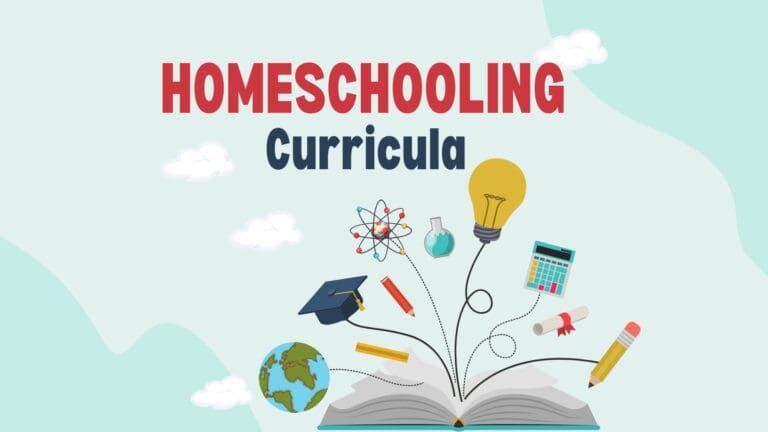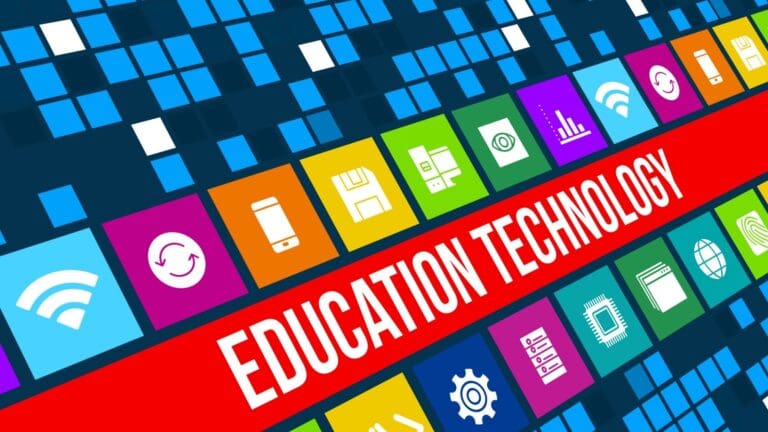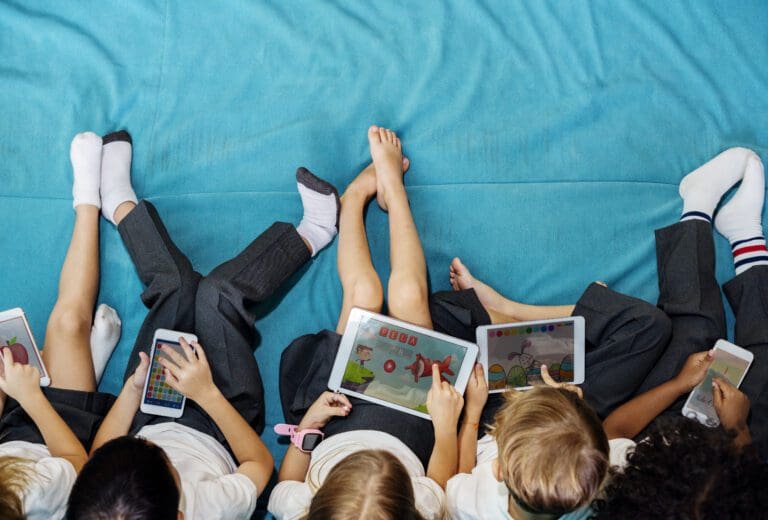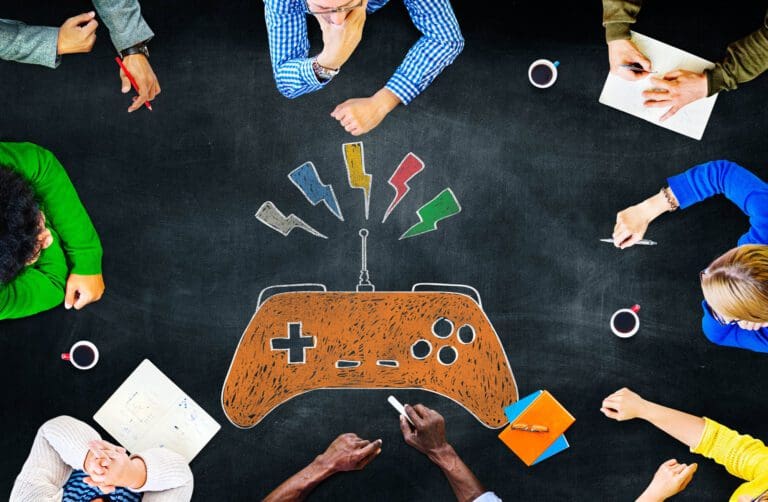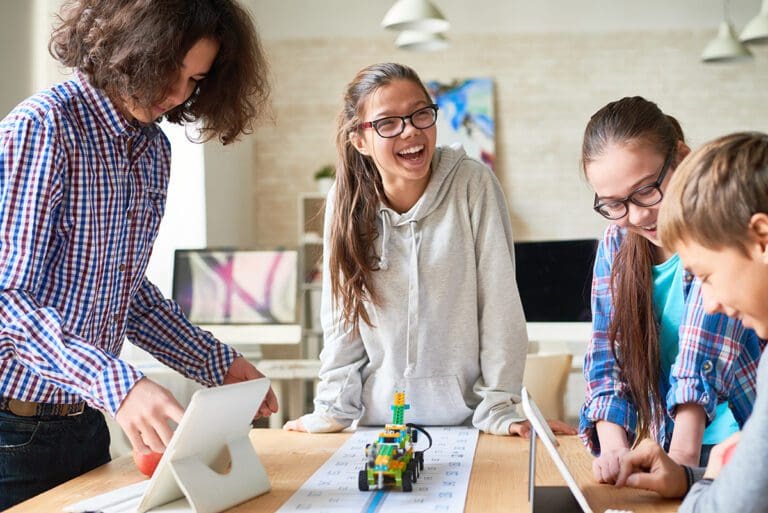After-40th-Years-Old-Non-IT: Microlearning Made Easy for the Prime-Timers
One day, I decided it was time to embrace the digital revolution and learn about microlearning. After hearing my younger colleagues rave about how simple it could be, I was convinced I could get the hang of it. Little did I know I was about to embark on a comical journey filled with technological mishaps.
So, I did what any “tech-savvy person would do: I turned to “Google” for guidance. While searching, I stumbled upon an amusing article showcasing older folks struggling to understand technology. I chuckled, thinking that wouldn’t be me—oh, how wrong I was.
With newfound confidence, I tried downloading the latest microlearning app on my smartphone. I tapped and swiped, but nothing seemed to work. Frustration grew as I tried to zoom in on the screen like the youngins, only to call my boss multiple times accidentally. On the fifth call, he probably suspected I craved some attention.
Just when I thought I wouldn’t crack the code to microlearning, I had a flashback to my childhood and the ever-effective method of “trial and error.” So, I dove back into the app, blindly pressing buttons like deciphering an alien language. To my surprise, I finally landed on a microlearning tutorial. Success was mine! Until, of course, I realized the tutorial’s audio was foreign. I guess there’s still a lot to learn.
The “Good Old Days” of Learning
Ah, the good old days of learning, when I used to sit at a wooden desk with ink stains, scribbling away on lined paper. There was that faithful overhead projector, with its transparencies and the scent of the freshly printed acetate sheets. I’ll never forget those slides with the comic sans font staring back at me, while the teacher patiently explained the intricacies of long division.
Remember those days when we had to walk across the room simply to rewind a VHS tape, or the joy of listening to the cassette player on full volume, trying to comprehend the heavily accented voices on the language learning tapes? Oh, and don’t get me started on the endless notecards I used to create for memorizing vocabulary words and historical dates.

But now, in today’s fast-paced world, things have changed significantly. Say goodbye to chalk dust and hello to microlearning! Microlearning is all about breaking down complex information into bite-sized pieces that can be easily absorbed and retained. No more flipping through dusty textbooks, as I can now simply log in to an app on my phone and access a wealth of knowledge in minutes.
In this modern era, I can’t imagine spending hours at the library, flipping through card catalogs to find a single book (which I truly hated!!). Instead, I quickly search and have instant access to many e-books and online resources. Interactive quizzes and educational games (which I also hate! :), but still…) have replaced tedious note-taking, making learning feel more like playtime than work.
Gone are the days of waiting for the teacher to grade my assignments, as I can now receive instant feedback and track my progress using various learning platforms. I’ve even traded my bulky backpack full of textbooks for a sleek, lightweight tablet that contains my entire library of resources; it’s like carrying a whole new dimension of knowledge in the palm of my hand!
The convenience and efficiency of microlearning have undoubtedly made it easier for me to comprehend and retain new information. But hey, every now and then, I’ll still pick up a pen and paper to jot down a few notes, just for old-time’s sake.
The Microlearning Revolution After 40
“Micro” in microlearning refers to the idea of breaking down education into small, manageable units. It indicates the learning unit’s size, not the content’s importance or complexity.
In the context of learning, “micro” suggests that the information is delivered in small chunks, typically allowing for more focused attention and better retention. Each piece of content or learning material is succinct and designed to meet one specific learning outcome.
Imagine you have a large pie (a new subject you want to learn). It’s too big to eat all at once, right? Instead, you slice it into smaller pieces (this is the “micro” part of micro-learning). Now, instead of trying to eat the whole pie at once (which would be overwhelming and probably give you a stomachache), you can enjoy one piece at a time.
So, in microlearning, we break down big topics into smaller, bite-sized pieces. It’s like learning a little bit each day rather than cramming everything in at once. This way, learning becomes less overwhelming and easier to manage!
Age and the Shift to Microlearning
Well, my friends, 40 is the new 30, or so they say. But age can certainly play a role in learning, especially in adapting to new methods. This is where microlearning comes into play. It’s time for me to embrace microlearning, an eLearning trend breaking the mold of traditional learning methods.
What is it, you ask? Let me tell you: microlearning is focused on small chunks of information and multimedia content, provided at precisely the right moment—like a perfectly timed punchline your friends will be quoting for days. It helps learners like me develop skills and knowledge efficiently. Yes, I admit that my attention span may not be as youthful as it once was, but who has time for hours-long lectures when there are Netflix shows to binge-watch?
With microlearning, I can keep my ever-evolving brain on a roller coaster of productivity. Plus, it’s perfect for those who won’t (or can’t) stay glued to their screens for extended periods. The beauty of microlearning is that it allows me to learn with maximum efficiency in minimal time—you know, like ordering from your favorite fast-food chain.
So, dear friends, as we continue to age like fine wine, let us raise a toast to microlearning—a beacon of hope for those of us entering our 40s who still crave knowledge and self-improvement amidst our busy lives. Cheers to making learning efficient, effective, and remarkably compatible with that recently-acquired AARP membership!
The Magic of Chunks and Memory Mechanics
Chunking and Short-term Memory
I’ve discovered that our brains are like expert Tetris players, constantly grouping pieces of information into “chunks” to store them in our short-term memory. This handy technique, chunking, allows me (and you) to remember things more efficiently. For example, instead of memorizing a 10-digit phone number as individual numbers, I can split it into three (partially edible) chunks: area code, first three digits, and last four. It’s like a memory sandwich!
The magic doesn’t stop there though. As per the noteworthy George Miller’s Magical Number, our chunky short-term memory can hold around 7±2 items at a time, so using chunking effectively allows us to store more stuff in our brain’s temporary storage.
Long-term Memory and Microlearning
You might think, “That’s great for short-term memory, but what about long-term storage?” Fret not, my fellow memory enthusiasts! This is where microlearning shines. My fabulous 40-year-old brain benefits from breaking down larger topics into bite-sized, easy-to-learn pieces I can easily digest.
In a nutshell, microlearning optimizes our neural pathways for long-term memory encoding. Doesn’t that sound fancy? It’s like upgrading my internal hard drive! So rather than cramming tons of information into my neurons, I can space it in small, digestible chunks. It’s quite similar to how I savor my favorite meals over the course of a fine dining experience.
To sum up, I’ve become a master of the magic of chunks and memory mechanics, and you can too! By leveraging chunking for short-term memory and embracing microlearning for long-term memory consolidation, we can continue to learn and grow gracefully, even in our fabulous 40s.
Mastering Skills for Midlife Career Changes
Professional Development and Microlearning
Unlike traditional education courses requiring months or even years of commitment, microlearning is about acquiring new skills in bite-sized chunks. It’s perfect for those of us juggling family, work, and that oh-so-delightful midlife crisis.
Microlearning platforms like LinkedIn Learning offer short, digestible courses on various topics, from marketing to time management. With just a few minutes a day, I found myself actually understanding new ideas and concepts. Plus, I could squeeze in a lesson while waiting for my laundry to finish or my coffee to brew. Talk about professional development on my terms!
Boosting Confidence and Mental Health
Microlearning as a Relationship Tool
But the benefits didn’t stop there. I realized microlearning could serve as a fantastic relationship tool. Here’s how it affected my life in several areas:
- Travel and Vacation: My partner and I made it a point to learn a few phrases for our next trip. Suddenly, we felt more connected and better equipped to explore unfamiliar territories.
- Fitness and Gym: We decided to micro-learn workout moves together and found our shared interest in fitness helped us bond while keeping us accountable.
- Mental Health: Believe it or not, incorporating microlearning into our daily routines has also improved our overall mental health. And when both partners feel more grounded, our relationship only gets stronger.
Leveraging Technology in Microlearning
Ah, the big 4-0. Things are changing, and I’m not just talking about needing reading glasses! As someone who’s hit this milestone, I’ve realized I need to adapt my learning approach, especially if I’m going to continue adapting to modern life. So let’s dive into the wonderful world of microlearning, and how technology can help us after-40 folks absorb more knowledge in less time.
Microlearning Apps and Software
It’s time to get techy! As a 40-something, I might not be as digitally native as my younger counterparts, but who says I can’t keep up? Thanks to microlearning apps, I can sneak in a learning sesh while waiting for my coffee to brew or while my kids argue over whose turn it is to walk the dog. A couple of my favorites include:
- Quick, Quizzy, and Painless (I just made up these names, but you get the idea): These fun, engaging apps turn learning into a game, perfect for someone like me who has a competitive streak.
- Reading and Multimedia Magic: Remember books? Yeah, me too. However, the days of sitting down with a hefty volume have been replaced by short, impactful digital reads and multimedia content that fits oh-so-well into my busy schedule.
Education and Social Media Synthesis
Now, about that social media addiction we all pretend we don’t have – it’s time to transform it into something educational. As a nifty 40-something, I’ve finally learned to stop mindlessly scrolling and start absorbing valuable knowledge. Here’s how I do it:
- Learning Objectives: I set my mini-goals, like learning five new words daily from those trendy vocabulary accounts. You know, so that I can keep up with the cool kids.
- Follow Educational Accounts: Goodbye, cat videos. Hello, insightful infographics and bite-sized articles that teach me something new in just a couple of minutes.
- Join Study Groups: Remember the joy of bonding over shared academic misery? It’s back! Online study groups let me connect with fellow learning enthusiasts, and together, we make it easier for ourselves to reach our goals.
So here’s to us, the after-40 crowd! Armed with technology and a dash of humor, we can conquer microlearning and show the youngsters we still have it.
Working Smarter, Not Harder
You know what they say: “Life begins at 40.” But that doesn’t mean we can’t work smarter as we age. In this brief yet riveting section, I’ll tell you how to do microlearning work to your advantage, so you can maximize team efficiency and develop leader and manager routines.
Microlearning for Team Efficiency
It’s all about breaking down knowledge into tiny, digestible bites. Whoever said size doesn’t matter has obviously never tried microlearning with their team!
Here’s what I noticed with my team:
- Efficiency skyrocketed: My team could learn faster and collaborate better, like a well-oiled machine, by focusing on specific challenges.
- Engagement increased: Forget mindlessly clicking through slides; microlearning made it fun and interactive, keeping my team entertained and attentive.
To really embrace microlearning, I integrated it with these 3 marvelous strategies:
- Job-specific training: Tailored sessions for my trusty teams to address their pain points.
- Diversify delivery formats: Combining videos, quizzes, and bite-sized articles to give the brain variety.
- Reinforce knowledge: Periodic refreshers because, let’s face it, selective amnesia is a thing.
Developing Leader and Manager Routines with Microlearning
I wasn’t just looking out for my team – I had my own managerial skills to sharpen too! So, I used microlearning to improve my leader and manager routines. After all, “With great power comes great responsibility.”
Allow me to share what I did to up my game:
- Time management: I mastered prioritizing tasks and delegating work, saving precious hours for more important matters (like my expanding 40-year-old waistline).
- Problem-solving: Learning to break complex problems into smaller chunks without breaking a sweat – or my bifocals.
- Communication: Honing the craft of speaking Teamish, Managerish, and even Bossish, because linguistic prowess keeps the conversation flowing and confusion at bay.
So, there you have it, my friends! Embrace microlearning after 40 and keep working smarter to stay ahead in this unrelenting game of life.
P.S. Once I got comfortable with microlearning, nano learning came along. What the hell is this??
Frequently Asked Questions
What’s the mini deal with microlearning?
Oh boy, let me tell you! Microlearning is like the tiny but mighty cousin of traditional learning. It’s all about breaking down complex topics into smaller, more digestible chunks. This way, I can learn at my own pace, and it’s perfect for my short attention span. Also, it helps me retain information better because I’m not trying to cram everything into my head at once. In short, microlearning is a big deal in a small package.
Any fun-sized examples of microlearning?
You bet! Some of my favorite fun-sized examples of microlearning include watching short tutorial videos on YouTube, participating in flashcard-based language learning apps, or reading one-page summaries of important concepts. Even scrolling through infographics on Pinterest counts. The world is my bite-sized learning playground!
Bite-sized learnings: how short is ideal?
The golden question, my friend! Honestly, it depends. Ideally, microlearning should be short enough to keep my interest but not so short that I don’t learn anything. Generally, microlearning modules last between 2 to 15 minutes. Just like snacking, microlearning should be satisfying but shouldn’t make me feel too full of information.
A micro-class in 4 key elements?
Sure thing! In my opinion, the four key elements of a successful microlearning experience are: 1) It has to be focused on one specific topic, 2) It must be engaging and interactive to keep me interested, 3) It should be quick so that I can fit it into my busy schedule, and 4) It’s got to be easily accessible whenever I need it. If all these boxes are ticked, count me in!
Microlearning: Friend or Foe to traditional learning?
Ah, the age-old debate. For me, microlearning is definitely a friend of traditional learning. They complement each other like peanut butter and jelly. While traditional learning provides a solid foundation, microlearning helps me build on that by reinforcing concepts and filling in knowledge gaps. Together, they create the perfect balance for my intellectual appetite.
Why’s the world gone micro-learning mad?
Well, it’s pretty simple. In today’s fast-paced world, I’ve got so much to do and so little time. Microlearning fits perfectly into my lifestyle by offering quick, engaging, and easily accessible knowledge nuggets. Plus, with the rise of smartphones and social media, everyone’s jumping on the microlearning train because it makes sense. So, all aboard the microlearning express! Choo choo!

